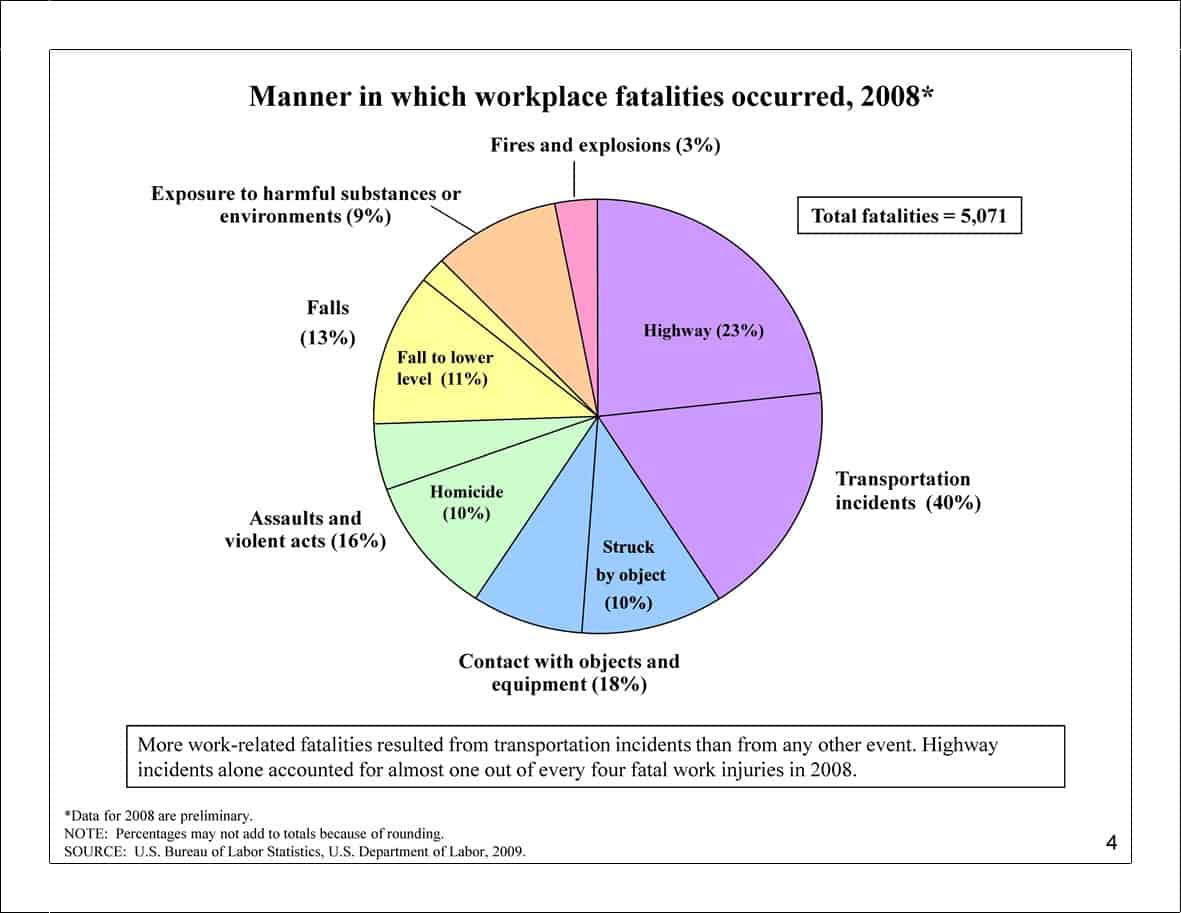Preliminary data on workplace fatalities was released recently by the Census of Fatal Occupational Injuries (CFOI) program in the United States. Economic pressures have reduced the size of the workforce which, the data indicates, decreased fatalities. Good news in one way but only status quo if one is looking at long-term trends or for some benefit from government workplace safety initiatives.
Benchmarking and statistics junkies will be able to extract a great deal of information from the preliminary data. The chart below is a good example of the level of detail available.
There was a passing mention in the media release which caught our attention – workplace suicides. The media release states:
“Workplace suicides were up 28 percent to a series high of 251 cases in 2008, but workplace homicides declined 18 percent in 2008……
Workplace suicides rose from 196 cases in 2007 to 251 cases in 2008, an increase of 28 percent and the highest number ever reported by the fatality census. Suicides among protective service occupations rose from 14 in 2007 to 25 in 2008.”
Regular SafetyAtWorkBlog readers will understand that work-related suicides is an area that we consider under-researched, so the figures quoted are of particular interest although only a minor part of the statistical report. It would be great if the Bureau of Labor Statistics revisited its 2004 analysis of workpalce suicides in light of this considerable statistical increase.


